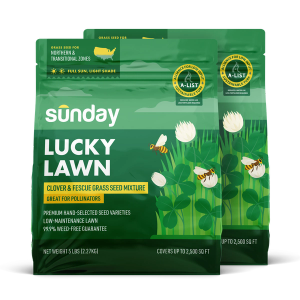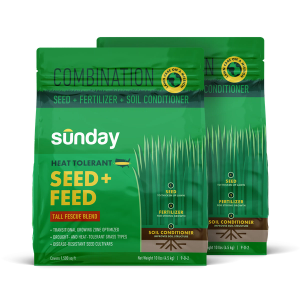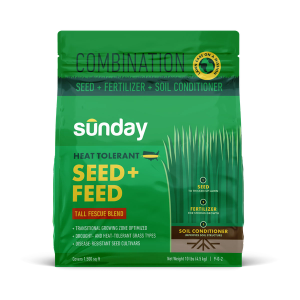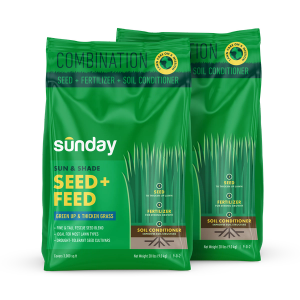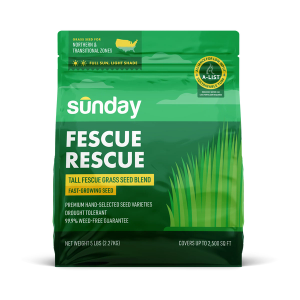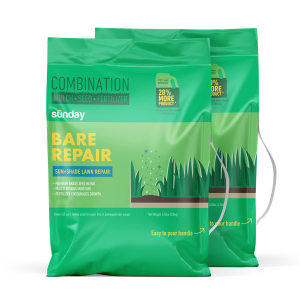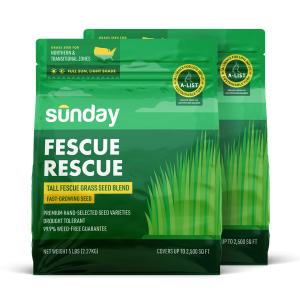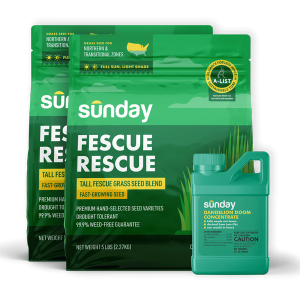At Sunday, we believe your home is more than just a plot of land, or a roof over your head, or a picture-perfect lawn. All around, it’s host to a thriving ecosystem of birds, plants, and insects with whom we can live in harmony—and, occasionally, a pest with whom we can’t.
Is it possible to balance the good with the not-so-good? That’s where we come in. While traditional pest management methods blanket your property with brute force sprays that are highly toxic and persistent in the environment, we believe in an integrated pest management system that builds a more rewarding relationship between you and your land.
Natural pest prevention
We call this Integrated Pest Management, or IPM. Around the home or yard, its about removing conditions attractive to pests, keeping them out, and only intervening with the least toxic options as a last resort. At that point, pesticides can be a helpful tool to prevent pests from entering your home and help you enjoy your outdoor spaces more. When you first notice a pest problem, take the following steps:
- Know your pest! For the best pest control, you need to know what you’re dealing with. One of the main reasons that traditional pest management fails is that the pest is not accurately identified. ID your pest, then learn where it hides and what it eats so you can make your environment less hospitable. This may solve the problem on its own!
- Modify the environment. “Foundation sanitation” is a great habit in its own right, but it’s also a great way to deter pests. Clean up leaves under steps and around window wells, trim bushes away from the building, and inspect your foundation. Remove standing water that would attract mosquitoes. In other words, eliminate the moist, shady areas around your home that would attract and harbor pests!
- Snag a Sunday spray. One size does not fit all when it comes to pesticides. In fact, harsh, repeated use of all-purpose sprays that include synthetic pyrethroids and neonicotinoids (e.g., imidacloprid) are a primary driver of pesticide resistance! When used according to the label, Sunday products use a targeted approach that is effective against pests but doesn’t persist in the environment or harm the overall ecosystem.
There’s a lot to love about IPM. In addition to the ecosystem benefits, it’s an empowering practice that makes you the expert! Learning what you’re dealing with and how to treat it in a targeted way—as opposed to spraying blindly and hoping for the best—can be, dare we say, life-changing.
Sunday pest control products
When you’re ready for the spray approach, Sunday has you covered. Get to know our targeted products designed to be tough on pests but easy on the environment:
Ant Adios
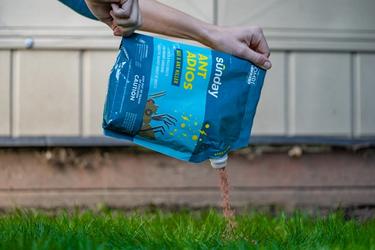
When it comes to pest removal, it’s all about how you say goodbye. So say “adios” to pesky ants and a variety of other crawling insects with our powerful product, which uses cutting edge science and patented technology to win the battle of the bugs. With Ant Adios, DIY pest control is as easy as open and shake!
What’s in it The active ingredient, spinosad, is derived from a soil bacterium called Saccharopolyspora spinosa. Often referred to as a “biopesticide,” it’s non-toxic to pets and is OMRI-listed for organic gardens and lawns.
How it works Spinosad contains a toxin that cripples the nervous system of many insect or arthropod pests. Ant Adios is formulated as spreadable granules, and when ants carry it back to the mound it works quickly to eradicate the colony. Ant Adios kills and controls earwigs, cutworms, sowbugs, pillbugs, and crickets, in addition to the following ants: pavement ants, little black ants, argentine ants, crazy ants, acrobat ants, bigheaded ants, cornfield ants, ghost ants, odorous house ants, thief ants, Texas leafcutting ants, field ants, and other common ants.
How to use it Ant Adios is available in 2-lb bags that cover up to 4,000 sq. ft. To apply, just scatter the granules on targeted outdoor areas next to the structure, like ant hills and mounds, or scatter around flower beds and individual plants for perimeter treatment. Spread the bait at a rate of ½-1 tsp per 3 sq. ft. for small areas, and 0.5-1 lb. per 1000 sq. ft. for large areas. For best results, apply while the ground is hydrated (but with little or no standing water!) and at least 24 hours before any anticipated inclement weather. Reapply every 2–4 weeks. Spinosad is highly toxic to bees, so it’s important to avoid applying over flowering plants when pollinators are present. Evening is a great choice because pollinators are less active at that time.
Mosquito Deleto
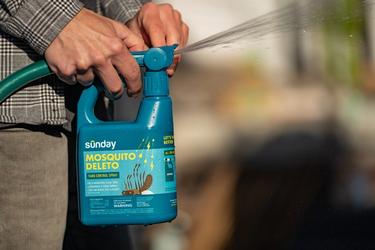
It’s time to hit delete-o on blood-sucking mosquitoes. Our plant-powered formula uses oil extracts to stop mosquitoes, fleas, and ticks dead in their tracks—and it also repels newcomers from your yard for up to four weeks in dry regions. (For rainier regions, we recommend applying every two weeks.) Safer for people, pets, and planet when used as directed.
What’s in it The active ingredients—cedar oil and lemongrass oil—will probably be familiar to you. Cedar is an invigorating essential oil, and lemongrass is a common ingredient in many global cuisines. While both are lethal to target insects, they’re considered minimum-risk pesticides by the EPA, due to low mammalian toxicity and low risk to the environment.
How it works Mosquito Deleto kills adult mosquitoes, ticks, and fleas on contact and also targets pests in the larval stage. While the cedar oil targets current infestations, the lemongrass oil acts as a repellent against future pests. Our 32 oz. ready-to-use spray covers up to 5,000 sq. ft. and is effective for about 4 weeks.
How to use it Start by choosing a “yard protection zone,” a.k.a., the area of your property where your family spends the most time (this may be the patio area and lawn extending to a playground or hot tub). Be sure your lawn is sufficiently hydrated and not experiencing drought or heat stress. Spray in an up and down motion, working quickly to cover your protected lawn area, until blades and leaves are fully wet. Avoid spraying flowers and pollinator friendly plants. For best results, reapply 7 days after first application to reinforce your new pest barrier. In wetter climates apply every 14 days and in dryer climates, apply every 28 days. Once the pest control spray dries, you can get back out on your grass.
Pay special attention to the following areas for pest-specific coverage.
- MOSQUITOES Spray any shaded and damp areas where adult mosquitoes rest including under decks, shrubs, bushes, and ground cover. Spray your entire protection zone to repel mosquitoes.
- TICKS Spray any shady areas where ticks can seek shelter from direct sunlight such as woods, trees, and bushes. Concentrate your spray on the areas where the shaded area meets the lawn, and spray at least a 12 ft. wide lawn swatch where the lawn meets the woods to create a barrier of protection.
- FLEAS Spray any dark corners of your lawn including wood piles or edges of woods where fleas may rest and leave larvae. Don’t forget places where companion animals rest—under decks, shrubs, and bushes.
Nix Ticks
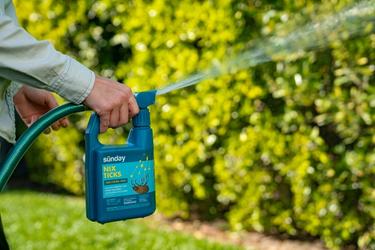
The time for ticks to get the nix has come. Sunday Nix Ticks works with nature to kill, control, and repel pests—without all the toxic, hard-to-pronounce ingredients. Our plant-powered, biodegradable yard control formula uses oil extracts to stop ticks, mosquitoes, and fleas dead in their tracks in as little as 10 minutes!
What’s in it The active ingredient is cedar oil, which is derived from the bark of various conifers (primarily pine and cypress). Because of its low mammalian toxicity and low risk to the environment, the EPA considers it a minimum-risk pesticide.
How it works Nix Ticks kills adult ticks, mosquitoes, and fleas on contact. Our 32 oz. ready-to-use spray covers up to 5,000 sq. ft. and is effective for about four weeks.
How to use it Start by choosing a “yard protection zone,” a.k.a., the area of your property where your family spends the most time (this may be the patio area and lawn extending to a playground or hot tub). Be sure your lawn is sufficiently hydrated and not experiencing drought or heat stress. Spray in an up and down motion, working quickly to cover your protected lawn area, until blades and leaves are fully wet. Avoid spraying flowers and pollinator friendly plants. For best results, reapply 7 days after first application to reinforce your new pest barrier. In wetter climates apply every 14 days and in dryer climates, apply every 28 days. Once the pest control spray dries, you can get back out on your grass.
Bug Doom
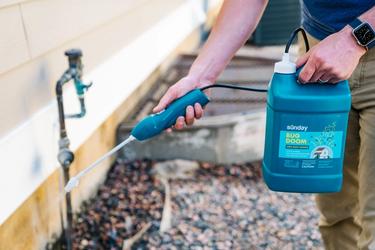
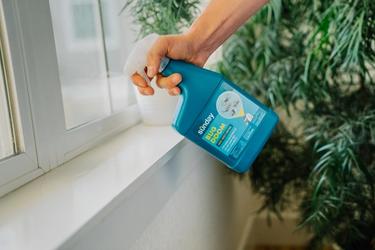
Bug Doom uses patented technology and a powerful, botanically derived pesticide to control troublesome pests both indoors and out. It’s available as a barrier treatment to keep insects out of homes, flower beds, and other protected areas, as well as a ready-to-use spray that’s ideal for indoor spot treatments.
What’s in it You may recognize the first active ingredient, canola oil, from your pantry! The second active ingredient, pyrethrin, is naturally derived from chrysanthemums, which produce it to protect themselves from insects. Now we’ve concentrated it to protect your house! It’s biodegradable (easy on the environment!), and helps reduce out-of-control pest populations while avoiding the residual effects of harsh, long-lasting pesticides. Safer for people, pets, and planet when used properly.
How it works While canola oil causes suffocation, pyrethrin is an insect neurotoxin that works almost immediately upon contact, causing a loss of motor coordination and paralysis that leads to death. Targeted insects include ants (excluding fire ants, harvester ants, Pharaoh ants, and carpenter ants), bed bugs, beetles, boxelder bugs, carpet beetles, caterpillars, centipedes, clothes moths, American cockroaches, crickets, darkling beetles, dermestids, earwigs, Elm leaf beetles, firebrats, hide beetles, house flies, kudzu bugs, leather beetles, non-biting midges, millipedes, moths, multicolored Asian lady beetles, pantry pests, pillbugs, silverfish, sowbugs, spiders (excluding black widow, brown recluse, and hobo spiders), and stink bugs (including brown marmorated stink bugs).
How to use it Spray directly onto pests as an indoor spot treatment, as needed. For perimeter protection, apply every four weeks during the pest season to maintain a strong barrier; for problem areas, you can apply up to every two weeks. Thoroughly cover infested areas and insect hiding places. Exposure of sprayed areas to weather—particularly sunshine—reduces the duration of any residual effects. Repeat as necessary. Do not apply directly to plants, or to blooming flowers while bees are foraging. People and pets can reenter areas as soon as Bug Doom dries.
Bug Doom Home Insect Control pest protection is most effective when coupled with natural pest prevention practices and vegetation-free zones.
Indoor hiding spots: Cracks and crevices, crawlspaces, storage areas, sinks, cabinets, counters, stoves, shelves, drawers, bookcases, along baseboards, around doors and windows, and behind and under refrigerators.
Outdoor hiding spots: Gravel; bark mulch; lawns; seams and cracks in pavement, patios, and walkways; around the outside of raised beds and containers; and where pests may enter buildings including screens, window frames, foundation, roof eaves, garages, and garbage cans.
Pest control the Sunday way
Pest control is an important part of every successful lawn care routine. For best results, pair Sunday pest control products with your Sunday Custom Lawn Plan.







